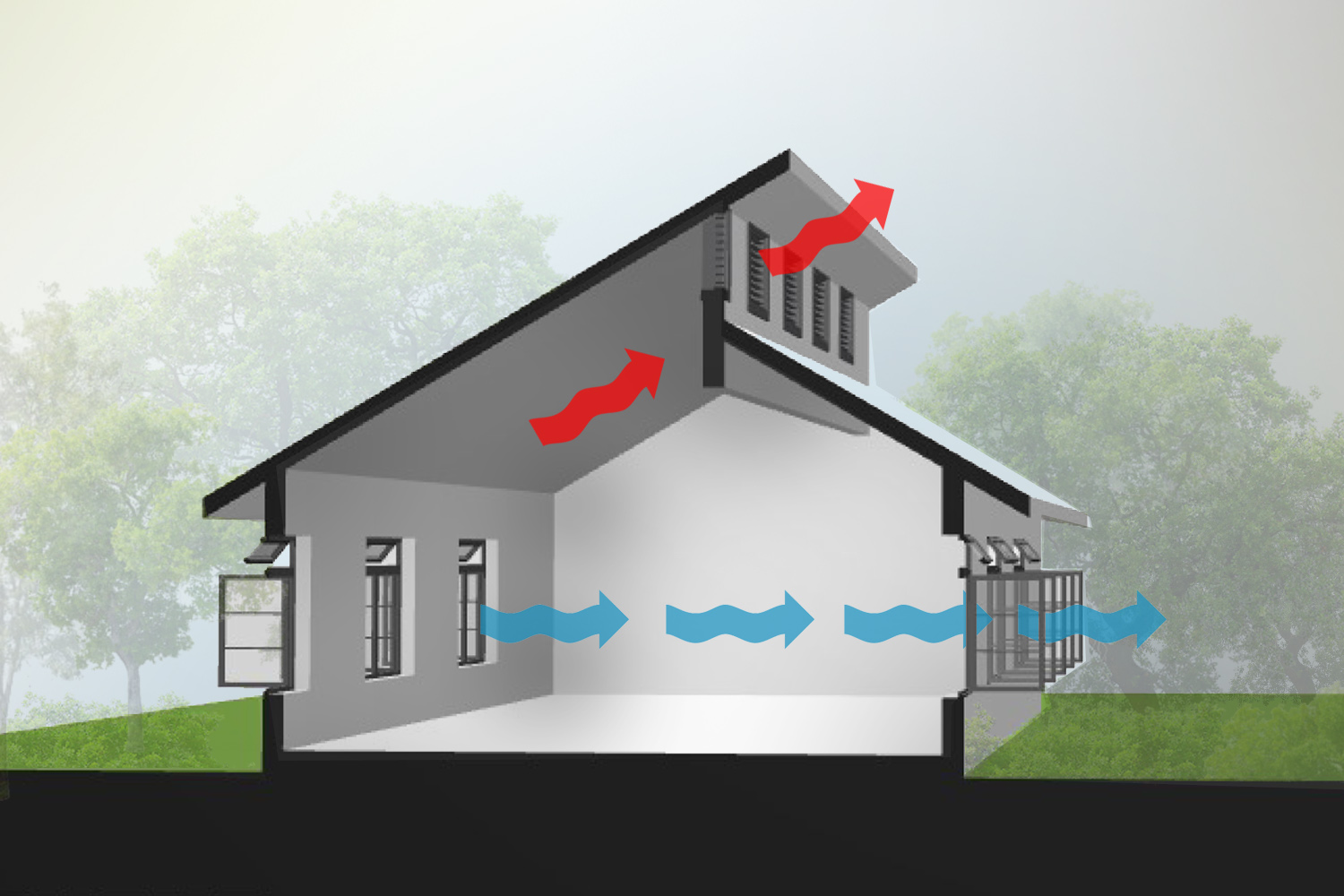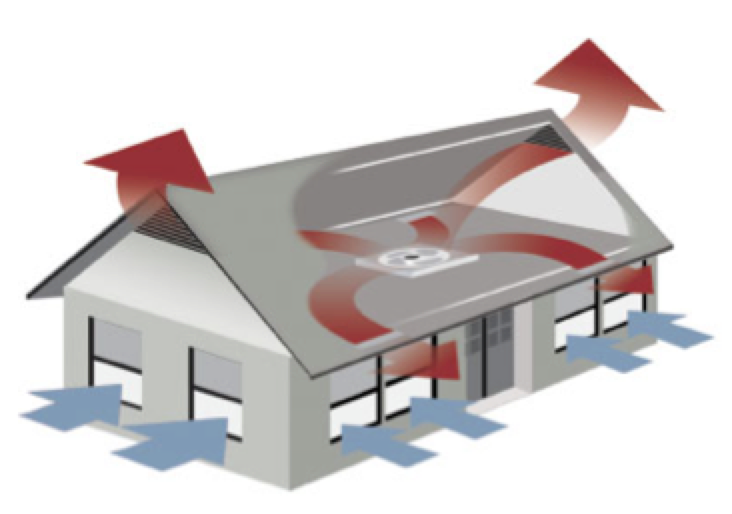How Home Ventilation Melbourne Enhances Comfort and Well-Being
Recognizing the Importance of Home Air Flow for a Healthier Living Atmosphere
Home ventilation plays an important role in maintaining a healthy living atmosphere. It helps with the exchange of exterior and indoor air, which is necessary for improving air quality. Without proper air flow, homes can end up being reproducing premises for allergens and toxins. The consequences of inadequate air circulation can be significant. This raises the questions of how homeowners can successfully carry out air flow approaches to safeguard their health and well-being. Recognizing these methods is crucial.

The Basics of Home Ventilation
Home ventilation serves as a necessary component of indoor air quality and comfort. It includes the process of trading stale interior air with fresh exterior air, thereby minimizing moisture and managing temperature. Proper ventilation systems can include natural methods, such as open windows and vents, in addition to mechanical systems, such as exhaust fans and air exchangers. Effective home air flow aids prevent concerns like indoor mold development and the build-up of harmful bits. It likewise boosts general power effectiveness, as well-ventilated areas can maintain comfortable temperature levels with less dependence on heating and cooling down systems. Comprehending the essentials of home ventilation is essential for property owners looking for to produce a healthier living setting for themselves and their families.

Common Resources of Indoor Air Pollution

Lots of may not realize it, indoor air pollution can originate from different sources within a home. Typical contributors include unstable organic compounds (VOCs) sent out from paints, solvents, and cleansing items. Home home appliances, such as gas stoves and fire places, can release hazardous gases like carbon monoxide and nitrogen dioxide. In addition, mold and mildew and mold flourish in wet areas, launching spores that impact air quality. Pet dander, allergen, and plant pollen can gather indoors, further aggravating pollution degrees. Cigarette smoking inside your home creates hazardous chemicals that stick around in the air. Developing products, including asbestos and formaldehyde, can off-gas damaging compounds. Identifying these resources is crucial for maintaining a healthier indoor setting and promoting reliable ventilation strategies.
Health And Wellness Impacts of Poor Air Flow
Indoor air pollution can have significant wellness ramifications, especially when air flow is insufficient. Poor air flow can result in the accumulation of dangerous pollutants, such as unstable organic substances, mold, and particulate matter. This build-up may lead to breathing concerns, consisting of bronchial asthma, allergies, and chronic obstructive pulmonary disease. Individuals might experience signs like headaches, tiredness, and irritation of the eyes, nose, and throat. Prone populaces, such as kids and the senior, go to higher danger for severe wellness effects. Long-lasting exposure to badly aerated environments can also add to a lot more major problems, including heart diseases. As a result, guaranteeing correct ventilation is crucial for keeping a healthy and balanced living environment and minimizing the threat of health difficulties associated with indoor air contamination.
Effective Ventilation Approaches for Your Home
Proper air flow is necessary for keeping a healthy and balanced interior environment, and carrying out reliable approaches can significantly boost air quality. House owners can start by making certain that exhaust fans are mounted in kitchens and restrooms to eliminate excess dampness and odors. Opening up windows frequently permits fresh air to flow, specifically during light weather. In addition, utilizing air cleansers with HEPA filters can assist catch air-borne contaminants. For homes with heating and cooling systems, maintaining cooling and heating systems and changing filters routinely is important for peak performance. Incorporating natural ventilation strategies, such as cross-ventilation, can additionally enhance air flow. Securing any kind of leakages in windows and doors avoids unwanted drafts, which can interfere with regulated airflow, ultimately leading to enhanced indoor air quality and convenience.
Maintaining Optimal Air Top Quality Year-Round
To preserve ideal air top quality year-round, homeowners need to embrace a proactive approach to managing their interior environment. Consistently keeping track of interior air quality is crucial; this includes monitoring for contaminants such as dust, mold and mildew, and unpredictable organic compounds (VOCs) Carrying out effective air flow systems, such as exhaust followers and air cleansers, can considerably minimize airborne pollutants. In addition, regular upkeep of heating and cooling systems warranties peak performance and air circulation. Homeowners need to also take into consideration discover this info here moisture levels, as extreme dampness can result in mold and mildew growth. Seasonal adjustments might demand changes in ventilation techniques to accommodate varying exterior air quality. By prioritizing these methods, property owners can create a healthier home, promoting overall health for all passengers throughout the year.
Often Asked Inquiries
Exactly How Can I Inform if My Home Requirements Better Ventilation?
To figure out if a home calls for far better ventilation, one need to observe signs such as relentless humidity, mold and mildew development, stuffy smells, condensation on home windows, or raised allergy signs, showing insufficient airflow and potentially poor indoor air high quality.
What Are the Indicators of Poor Indoor Air Top Quality?

Can Houseplants Improve Indoor Air Quality Effectively?
The performance of houseplants in enhancing interior air high quality is questioned. While some researches recommend they can take in toxic substances and produce oxygen, their total impact may be very little compared to correct air flow and air filtration systems.
How Commonly Should I Adjustment My Air Filters?
The regularity of air filter changes generally depends on use and filter type. Generally, it is recommended to replace filters every three months, useful source though houses with family pets or allergic reactions may call for more regular changes for perfect performance.
Exist Any Details Air Flow Solutions for Allergy Sufferers?
Many ventilation systems, such as HEPA-filtered units, efficiently minimize allergens airborne. Home Ventilation Melbourne. These systems catch plant pollen, dust, and pet dog dander, giving allergy victims with a cleaner, much healthier indoor setting while handling air high quality properly
It assists in the exchange of exterior and indoor air, which is vital for boosting air top quality. Home air flow serves as a crucial element of indoor air quality and convenience. It involves the procedure of trading stagnant indoor air with fresh exterior air, consequently reducing moisture and regulating temperature. Indoor air contamination can have substantial health and wellness ramifications, specifically when air flow is poor. Correct air flow is necessary for maintaining a healthy indoor environment, and executing efficient approaches can greatly enhance air quality.